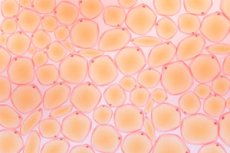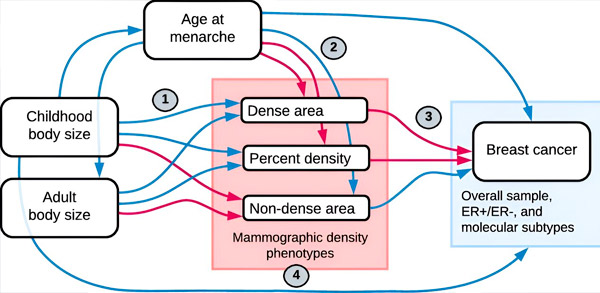New publications
Obesity in childhood reduces risk of breast cancer
Last reviewed: 02.07.2025

All iLive content is medically reviewed or fact checked to ensure as much factual accuracy as possible.
We have strict sourcing guidelines and only link to reputable media sites, academic research institutions and, whenever possible, medically peer reviewed studies. Note that the numbers in parentheses ([1], [2], etc.) are clickable links to these studies.
If you feel that any of our content is inaccurate, out-of-date, or otherwise questionable, please select it and press Ctrl + Enter.

Breast cancer is the most common cancer among women worldwide. With its increasing incidence, there is an urgent need to identify new modifiable risk factors for breast cancer. A new study from the University of Bristol suggests that childhood obesity leads to lower breast tissue density, which in turn reduces the risk of breast cancer. However, further research is needed to understand the mechanism of the overall protective effect of childhood adiposity and to identify new targets for intervention and prevention.
A study published in the journal Nature Communications investigated the unexplained protective effect of larger childhood body size on breast cancer risk, using a Mendelian randomization approach to examine the relationships between childhood and adult body size, timing of puberty, breast tissue density, and breast cancer risk.
The research team looked in detail at one of the most likely links: breast tissue density. High breast density, as measured by mammograms, is an established risk factor for breast cancer and is known to vary with body size.
When a mammogram shows dense breast tissue, it means there is more glandular or fibrous tissue in the breast compared to fatty tissue. Conversely, when breast tissue is less dense, it means there is more fatty tissue compared to glandular or fibrous tissue.
There is growing evidence that adipose tissue in childhood can lead to various diseases in adults. However, in the case of breast cancer risk, observational epidemiological studies, as well as more recent studies using genetic data, have shown that larger body size in childhood reduces the risk of developing this disease.
The researchers used data from genome-wide association studies (GWAS) and Mendelian randomization analyses. They were able to demonstrate that more than 50% of the protective effect of larger childhood body size on breast cancer risk was explained by changes in dense breast tissue.
The research team suggests that larger body size during childhood, at the onset of puberty, leads to the formation of less dense tissue in the breast. The dense area is the part of the breast (glandular and fibrous tissue) where cancer typically develops.
A smaller dense area in the breast later leads to a lower risk of breast cancer in adulthood. This is the proposed mechanism by which larger body size in childhood reduces the risk of breast cancer. However, the biological mechanism/pathway is more complex, and identifying the smaller steps in this process using genetic data is part of uncovering the basis for this unexplained causal relationship.

Flow chart of the relationships between the traits investigated in this study. Source: Nature Communications (2024). DOI: 10.1038/s41467-024-48105-7
Dr Marina Vabistsevits, from the MRC Integrative Epidemiology Unit (MRC IEU) and Bristol School of Medicine: Population Health Sciences (PHS), and corresponding authors said: "Exploring the mechanism of the protective effect of childhood adiposity is important because childhood weight gain cannot be considered a preventive measure against breast cancer.
"Investigating how this general 'protection' works is critical to understanding the underlying mechanisms leading to cancer development and prevention, as it may help identify new targets for intervention and prevention."
The study was made possible through collaboration with the Icahn School of Medicine at Mount Sinai and Kaiser Permanente Northern California, USA, who shared valuable mammographic density data for this project.
